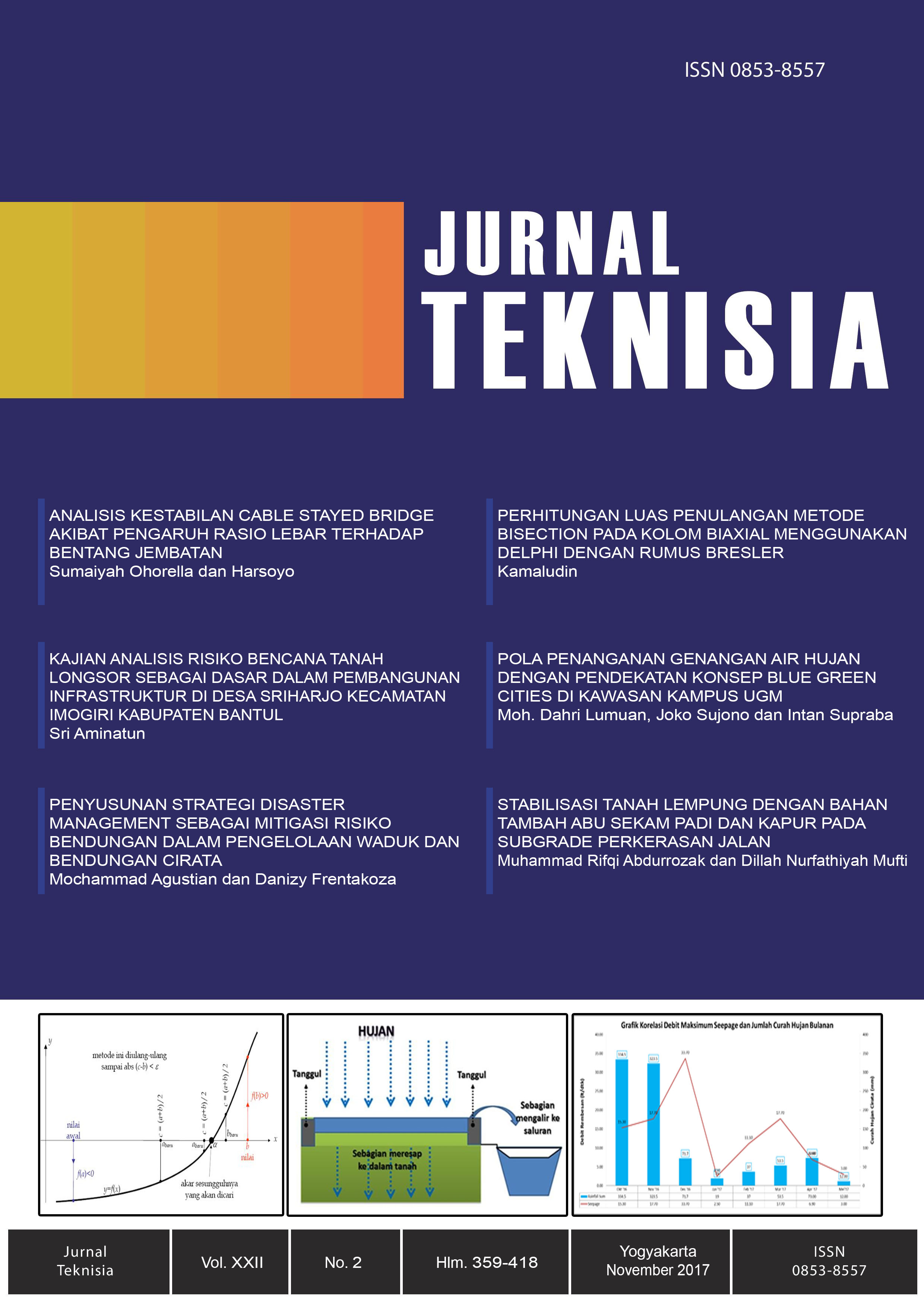Main Article Content
Abstract
Eruption of Mount Merapi in 2010 was the biggest eruption since 1872. On eruption in 2010, the mountain spewed out 140 million cubic meters of lava. While the direction of the lahar slide is mostly south. Therefore, several rivers south of Mount Merapi experience lava buildup which can become lava floods if exposed to heavy rain, one of which occurs on the Gendol River. Qualitative methods are used in this thesis. Qualitative data are obtained through a variety of data collection techniques, namely analysis of simulations, documents, and observations. This study took place around the banks of Sungai Gendol. This phenomenon of lava flood often causes many losses both materially and non-materially. There are various ways to mitigate lava floods, one of which is to simulate lava floods by using numerical modeling to estimate the movement of lava flood flows and their coverage area. In this research, the simulation of lava flood uses numerical modeling using the Dimlar V.1.0.2011 application. This Simlar application produces a simulation of the flow of base lava flood geographic information system that can be processed to retrieve data on the direction of lava flood propagation, the volume of lava flood flow and the area of lava flood coverage. And also can be given the existence of SABO building, so that it can compare the time taken by the flood to glide on the river given the SABO building or not given the SABO building.
Keywords
Article Details
Under the following term:
-
Attribution — You must give appropriate credit, provide a link to the license, and indicate if changes were made. You may do so in any reasonable manner, but not in any way that suggests the licensor endorses you or your use.
-
ShareAlike — If you remix, transform, or build upon the material, you must distribute your contributions under the same license as the original.
- No additional restrictions — You may not apply legal terms or technological measures that legally restrict others from doing anything the license permits.
References
- Bahri, P., Ikhsan, J., dan Harsanto, P., 2013, Dampak Banjir Lahar Dingin Pasca Erupsi Merapi 2010 Di Kali Gendol, (065A): Halaman A 39 – 45, Konferensi Nasional Teknik Sipil 7, Universitas Sebelas Maret (UNS) – Surakarta: 24-26 Oktober 2013.
- Cahyono, J., 2000, Pengantar Teknologi Sabo, Yayasan Sabo Indonesia, Yogyakarta.
- Kusumosubroto, H., 2013, Aliran Debris dan Lahar, Graha Ilmu, Yogyakarta.
- Triatmodjo, B., (2008), Hidrologi Terapan, Fakultas Teknik, Betta Offset, Yogyakarta.
References
Bahri, P., Ikhsan, J., dan Harsanto, P., 2013, Dampak Banjir Lahar Dingin Pasca Erupsi Merapi 2010 Di Kali Gendol, (065A): Halaman A 39 – 45, Konferensi Nasional Teknik Sipil 7, Universitas Sebelas Maret (UNS) – Surakarta: 24-26 Oktober 2013.
Cahyono, J., 2000, Pengantar Teknologi Sabo, Yayasan Sabo Indonesia, Yogyakarta.
Kusumosubroto, H., 2013, Aliran Debris dan Lahar, Graha Ilmu, Yogyakarta.
Triatmodjo, B., (2008), Hidrologi Terapan, Fakultas Teknik, Betta Offset, Yogyakarta.
